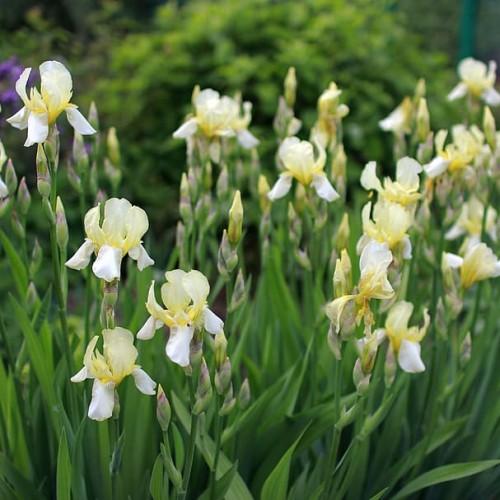
tall bearded iris
Iris 'Flavescens'
Cycle:
Herbaceous Perennial
Watering:
Average
Hardiness Zone:
3 - 9
Flowers:
Flowers In Spring
Sun:
Full sun,part shade
Leaf:
Yes
Growth Rate:
High
Maintenance:
Low
Drought Tolerant:
Yes
Care Level:
Medium
watering
Tall bearded iris need to be watered 1-2 times a week, depending on the climate. For warm climates, water every 7-10 days. For cooler climates, water every 4-7 days. It is important to water thoroughly so that a good amount of moisture penetrates to a depth of at least 18 inches. Monitor the soil moisture level and adjust the frequency and amount of watering accordingly. Avoid letting the soil dry out completely or become oversaturated.
sunlight
Tall bearded iris (Iris 'Flavescens') should generally receive full sun for at least 6-7 hours per day in order to flourish. In shadier areas, it can tolerate partial shade or filtered sunlight, but it will not perform as well. Additionally, it is best to provide the iris with some protection from the hottest part of the day, placing it in a location where it will receive a few hours of shade midday.
pruning
Tall Bearded Iris (Iris 'Flavescens') should be pruned in late fall, after the foliage has died down. Pruning at this time helps to remove damaged, diseased, or spindly growth, and can even help to avoid molds and fungi occurring in the warmer months. To prune, cut away any brown, dead leaves, as well as any old flower stems that are left from the previous year, ensuring that the cut is made about 1/4 inch above the soil level. Tall Bearded Iris should also be divided every 2 to 3 years to keep the plant healthy and vibrant. Divide the rhizomes, or the thick nodes that develop along the plant, and discard any diseased or damaged pieces. Replant the rhizomes in a well-draining soil with an organic fertilizer to help the plant grow. Finally, the foliage of Tall Bearded Iris should be trimmed back to approximately 6 inches above ground level in late fall or early winter to help prevent diseases or mold from developing.
